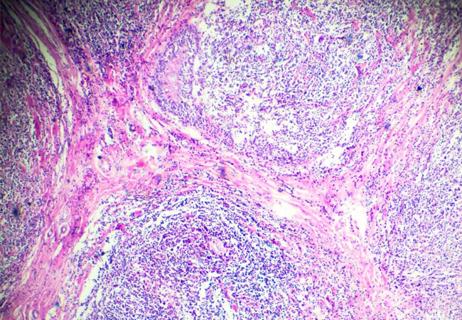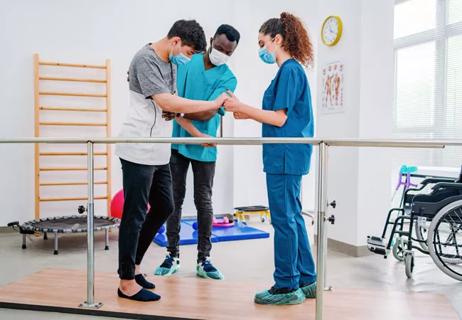Key themes and insights into the family-caregiver experience

Allogeneic hematopoietic stem cell transplant (HSCT), also known as bone marrow transplant, is a curative option for young patients with cancerous and noncancerous conditions. From conditioning and engraftment to post-transplant care, the journey can be isolating and arduous for patients and their families.
Advertisement
Cleveland Clinic is a non-profit academic medical center. Advertising on our site helps support our mission. We do not endorse non-Cleveland Clinic products or services. Policy
In a two-part study, researchers explored the caregiver experience by conducting 150 interviews with 49 participants across five different centers. The research team identified nine distinct themes and a range of subthemes. Findings from part I and part II were published in Transplantation and Cellular Therapy.
According to Seth Rotz, MD, a senior author and pediatric oncologist at Cleveland Clinic, the aim was to better understand the parental/caregiver experience and support them as they help navigate the patient’s treatment. Dr. Rotz, whose practice primarily consists of patients requiring a bone marrow transplant, is deeply familiar with these challenges. Still, he and colleagues agree it’s difficult to adequately prepare or counsel families on what to expect with HSCT.
“We wanted to talk to families to understand their priorities, which can change at different points during treatment, understand what drives their anxiety, and bring awareness to aspects of the process that we hadn’t fully realized.”
The investigators conducted a prospective study using a qualitative longitudinal research (QLR) design. Acknowledging that the experience can change significantly throughout treatment, caregiver interviews were conducted at days 0, 30, 100 and 180. These intervals reflect the immediate pre- and post-transplant periods, the inpatient experience, the transition to at-home and outpatient care, and the longer-term adjustment to life following HSCT.
The key themes across both papers are as follows, with multiple subthemes falling under each:
Advertisement
Detailed findings from themes one to four (as above) were reported in part I of the paper, and themes five to nine were captured in part II.
*Interviews were conducted between August 2019 and August 2021, during the peak of the pandemic.
Dr. Rotz reflects on a few anecdotes and themes from caregiver interviews that stood out for him:
On interfamily system stress, he notes, “Our psychologists and social workers are trained to support these specific issues, but I hadn’t fully appreciated how challenging this aspect of treatment could be,” notes Dr. Rotz.
The report indicates that among some participants, stress associated with treatment and family separation created marital and coparenting strains, impacted relationships with other children, and led to practical challenges for family life.
Stress related to their child’s treatment side effects was also a recurring theme. Specifically, Dr. Rotz cites mucositis, inflammation and sores that develop in the mouth because of chemotherapy: “We counsel people about it; it’s an expected side effect, but I don’t think we realized how distressing it can be for parents to watch their kids struggle with this aspect of treatment.”
Discharge is another area that many participants reported as anxiety-provoking.
“There is such an emphasis on going home and, in general, people want to get home, but it’s also such a leap of faith for them to leave the hospital for the first time after a bone marrow transplant,” he says. The goal is to strike the right balance of information, and many participants report either getting too much or not enough of it.
Advertisement
The ENGRAFT Health Learning Network is a collaborative group of patients, clinicians and researchers that formed to represent the transplant and cellular therapy community and address some of the unique issues that emerge during and following treatment.
This group is leading quality improvement projects and is working to develop a dialogue and establish consistency across centers nationwide. Outside of data-supported treatment guidelines, there is considerable variability in counseling that largely depends on the provider's or center's preference. This could mean guidance differs when it comes to things like post-transplant dietary restrictions or when a patient can return to school.
Similarly, Dr. Rotz hopes that by gaining a better understanding of the HSCT caregiver experience, specialists can refine their approaches to counseling.
“There is a lot of variability in how we counsel families, probably more than we realize. And if we can agree to reduce that variability, I think that will improve the level of anxiety and distress patients and families experience,” he concludes.
Advertisement
Advertisement

First-of-its-kind clinic for immune-related adverse events supports oncologists in managing severe side effects

Early communication between oncologists and ophthalmologist warranted

Variables affect nuances of the conversation

Driving advances in cancer care

Challenges emerge with application of interim PET scans

Complex, bidirectional interactions exist between cancer, therapy, toxicities and eating behaviors

Helping patients with cancer struggling with depression, anxiety and other mental health issues

How ‘Let’s Get Moving!’ is improving physical activity in children undergoing cancer treatment